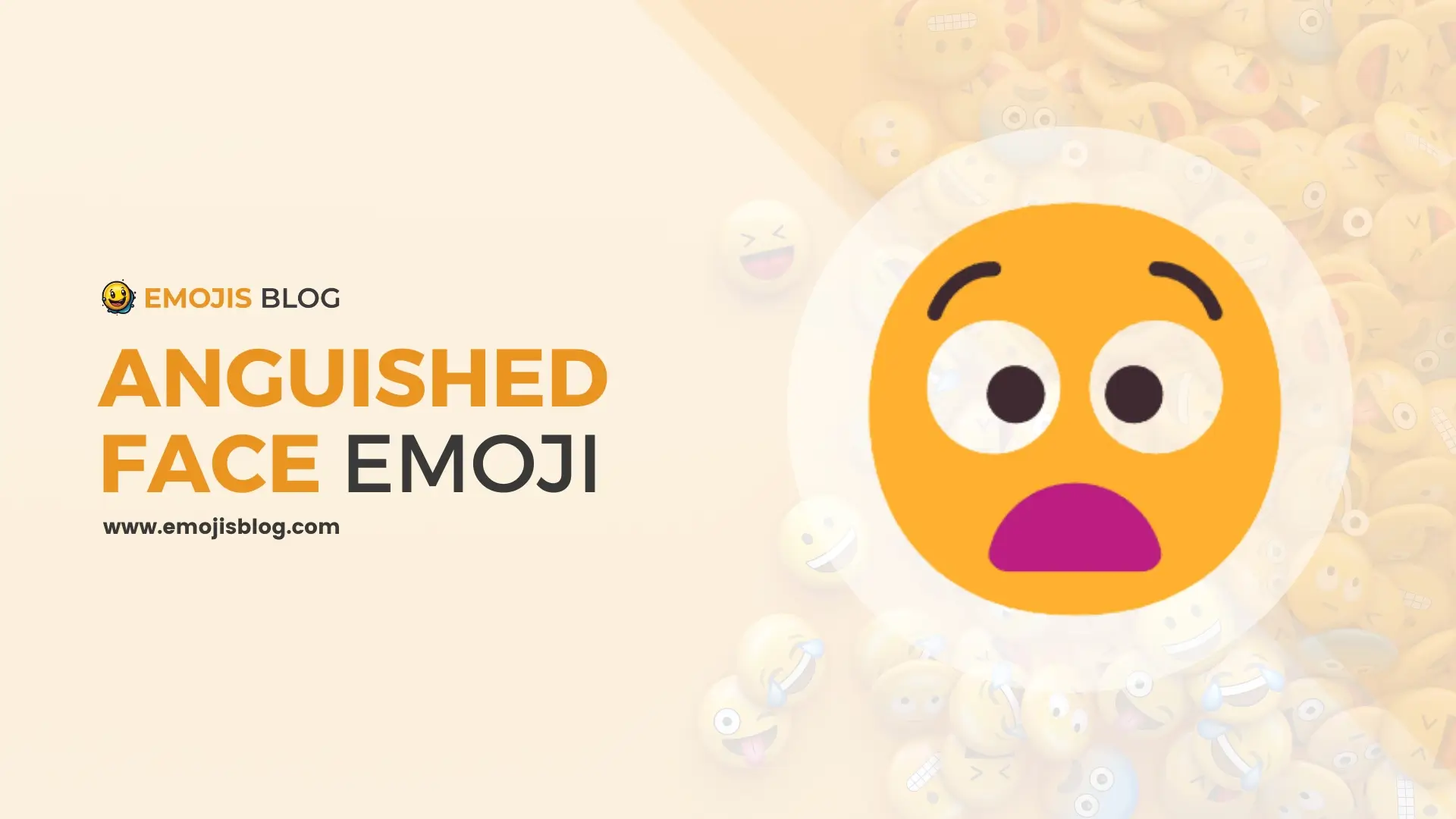What Does The Anguished Face Emoji Mean 😧
😧
What’s an Anguished Face Emoji 😧?
The anguished face emoji 😧 is a digital icon used to express a deep sense of distress, discomfort, or dissatisfaction. Characterized by its wide-open eyes and frowning mouth, it effectively conveys feelings of shock, disappointment, worry, or pain without the need for words. This emoji is commonly utilized in text messages, social media, and other forms of digital communication to enhance emotional expression, react to surprising or upsetting news, and emphasize discontent with certain situations. Its interpretation can vary based on cultural and contextual nuances, making it a versatile tool for conveying complex emotions in a concise and visually impactful way.
Technical Information
| Attribute | Detail |
|---|---|
| Emoji | 😧 |
| Description | A face showing distress or discomfort, characterized by wide-open eyes and a downturned, frowning mouth. |
| Unicode Version | Unicode 6.1 |
| Release Year | 2012 |
| Category | Smileys & Emotion |
| Subcategory | Face Concerned |
| Codepoints | U+1F627 |
| Shortcode | :anguished: (in some platforms) |
| Keywords | Anguished, face, pain, sadness, shock, discomfort |
| Skin Tones | None (Not applicable) |
| Variants | None (No color or gender variations) |
Understanding the Anguished Face Emoji 😧
The anguished face emoji, represented by 😧, is a graphical icon that conveys a range of emotions, primarily focusing on feelings of distress, discomfort, or dissatisfaction. This emoji is part of the vast array of emotive symbols used in digital communication to express feelings, reactions, or moods without the use of words. Below, we delve into the nuances of this particular emoji, exploring its meaning, usage, and variations in different contexts.
Meaning and Interpretation
The 😧 emoji typically features a face with wide-open eyes and a slightly frowning mouth, often depicted with eyebrows furrowed in a manner that suggests a high level of emotional pain or discomfort. The primary emotion conveyed by this emoji is one of anguish—a strong feeling of being deeply troubled or distressed.
This emoji can be used to express a variety of negative emotions, such as:
- Shock or Surprise: In contexts where someone is taken aback by unexpected news or events.
- Disappointment: When outcomes do not meet expectations, leading to a sense of letdown.
- Worry or Concern: Reflecting feelings of anxiety about a situation or the well-being of someone.
- Pain or Discomfort: Either physical or emotional, indicating a state of suffering.
Usage in Digital Communication
In the realm of digital communication, emojis like 😧 play a crucial role in adding nuance and emotional depth to messages. The anguished face emoji is often used in texts, social media posts, and other digital platforms to:
- Enhance Emotional Expression: It helps convey the speaker’s emotional state more vividly, adding a layer of empathy or sympathy to the conversation.
- React to Situations: As a response to news, events, or stories shared online that evoke feelings of distress or concern.
- Emphasize Discontent: To underscore dissatisfaction or disagreement with a particular situation or opinion.
Cultural and Contextual Variations
The interpretation of emojis can vary significantly across different cultures and contexts. While the 😧 emoji generally conveys feelings of distress, the intensity and specific nature of the emotion can differ based on the user’s cultural background, personal experiences, and the context in which the emoji is used.
For instance, in some cultures, expressing negative emotions openly is less common, and thus, the use of such an emoji might carry a heavier weight or be reserved for more serious circumstances. Conversely, in more expressive cultures, the 😧 emoji might be used more liberally, even in less severe situations.
Conclusion
The anguished face emoji 😧 serves as a powerful tool in digital communication, allowing users to express a spectrum of negative emotions, from shock and disappointment to worry and discomfort. Its effectiveness lies in its ability to convey complex feelings that might be difficult to articulate with words alone. As with all emojis, the context, culture, and individual preferences play a significant role in interpreting its meaning, making it a versatile and widely used emotive symbol in online interactions.

